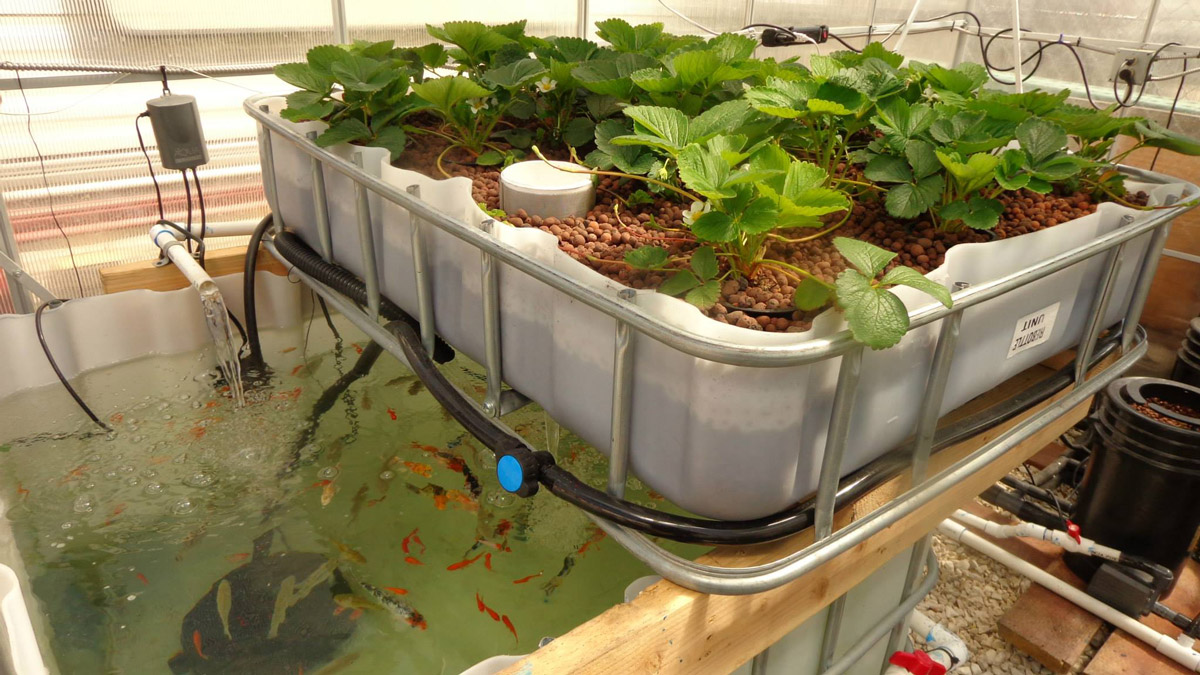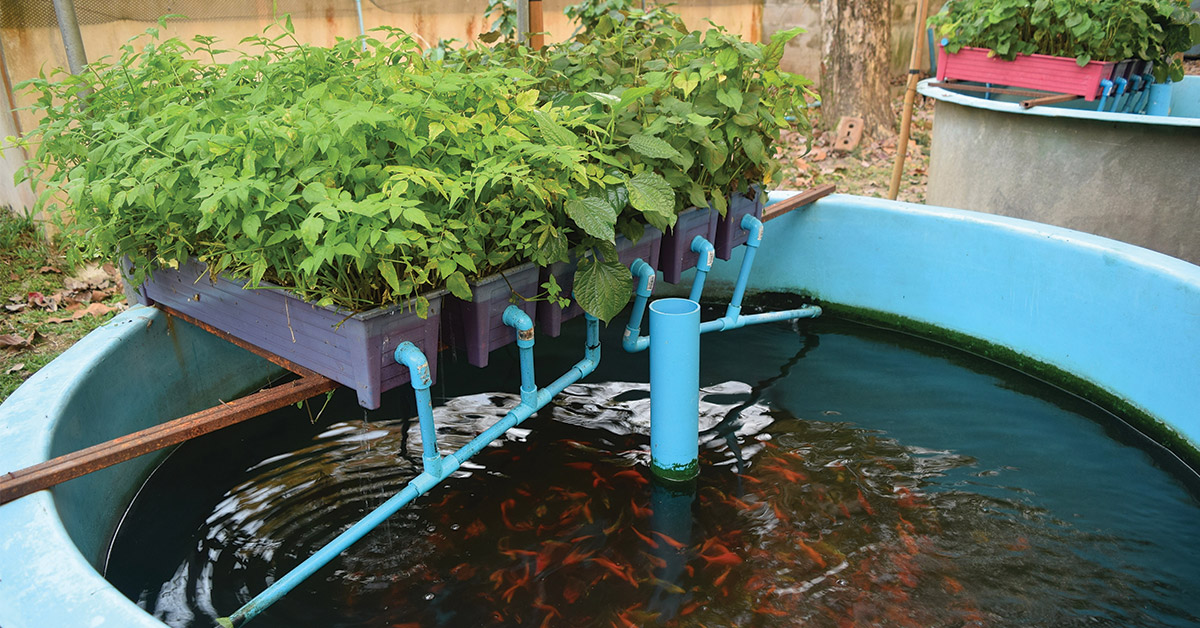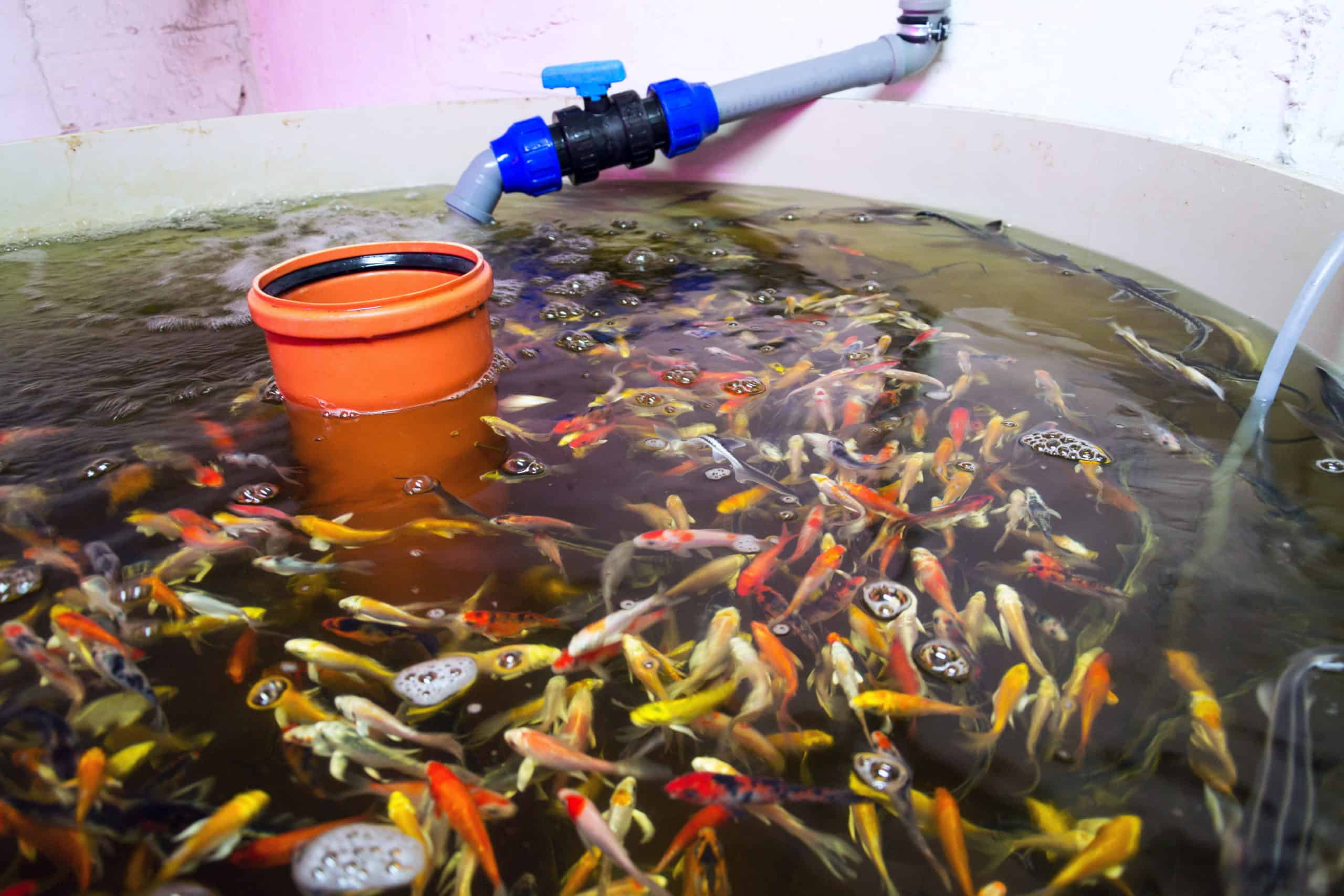Koi aquaponics is an innovative and sustainable way to raise fish and plants together in a mutually beneficial system. This guide will provide you with everything you need to know to get started with koi aquaponics, from designing your system to harvesting your fish and plants.
Koi aquaponics offers a number of benefits over traditional aquaculture and hydroponics systems. For example, koi aquaponics systems are more efficient in terms of water and nutrient use, and they produce higher yields of both fish and plants. Additionally, koi aquaponics systems can help to improve water quality and reduce the environmental impact of fish farming.
Koi Aquaponics Overview

Koi aquaponics is a sustainable and efficient way to raise koi and grow plants. It combines the principles of aquaculture, the raising of aquatic animals, and hydroponics, the growing of plants in water, to create a mutually beneficial system.
In a koi aquaponics system, the koi provide nutrients for the plants through their waste, which is filtered and converted into a nutrient-rich solution. This solution is then used to water the plants, which in turn help to clean the water for the koi.
Benefits of Koi Aquaponics
- Reduced water usage: Koi aquaponics systems use up to 90% less water than traditional aquaculture systems.
- Increased plant growth: The nutrient-rich water from the koi waste helps plants to grow faster and healthier.
- Reduced feed costs: The plants in a koi aquaponics system can provide a significant portion of the koi’s diet, reducing feed costs.
- Improved water quality: The plants in a koi aquaponics system help to filter and clean the water, improving the water quality for the koi.
Examples of Successful Koi Aquaponics Systems
There are many successful koi aquaponics systems in operation around the world. One example is the system at the University of Arizona, which has been in operation for over 20 years. This system produces over 10,000 pounds of koi and over 20,000 pounds of vegetables each year.
Another example is the system at the New York Botanical Garden, which is used to educate visitors about the benefits of aquaponics. This system produces over 500 pounds of koi and over 1,000 pounds of vegetables each year.
Koi aquaponics is an innovative system that combines fish farming with plant cultivation. To get started, you can refer to a comprehensive guide on how to aquaponics system . This guide provides step-by-step instructions and tips to help you set up and maintain a successful koi aquaponics system, ensuring a harmonious balance between your fish and plants.
Challenges and Opportunities of Koi Aquaponics
While koi aquaponics is a promising technology, there are some challenges that need to be overcome. One challenge is the high cost of setting up a koi aquaponics system. Another challenge is the need for specialized knowledge and skills to operate a koi aquaponics system.
Despite these challenges, there are also many opportunities for koi aquaponics. One opportunity is the growing demand for sustainable and efficient food production systems. Another opportunity is the potential for koi aquaponics to be used to produce high-value crops, such as koi and vegetables.
System Design
Designing a koi aquaponics system requires careful planning and consideration of the essential components. These components work together to create a balanced and efficient ecosystem that supports both the koi and the plants.
A typical koi aquaponics system consists of the following components:
Fish Tank
- The fish tank is where the koi are kept. It should be large enough to provide ample swimming space for the fish and to maintain good water quality.
- The tank should be equipped with a filtration system to remove waste products and keep the water clean.
Grow Beds
- The grow beds are where the plants are grown. They can be filled with a variety of media, such as gravel, sand, or expanded clay pellets.
- The grow beds should be designed to allow water to flow through them evenly and to provide good drainage.
Sump Tank
- The sump tank is a reservoir that collects the water from the grow beds. It provides a place for the water to settle and for solids to settle out.
- The sump tank should be equipped with a pump to return the water to the fish tank.
Plumbing
- The plumbing connects the different components of the system. It is important to use the correct size and type of plumbing to ensure that the water flows properly.
- The plumbing should be designed to minimize leaks and to allow for easy maintenance.
Water Management

Water quality is of utmost importance in koi aquaponics systems as it affects the health of both the fish and the plants. Poor water quality can lead to disease, stunted growth, and even death in koi, while also affecting plant health and productivity.
To ensure optimal water quality, it is essential to monitor and maintain several key parameters regularly.
Monitoring Water Quality
- pH:The pH of the water should be between 7.0 and 8.5, with a slightly acidic pH being preferred.
- Temperature:Koi are cold-water fish and prefer water temperatures between 18°C and 24°C. Water temperatures outside this range can stress the fish and make them more susceptible to disease.
- Ammonia:Ammonia is a toxic waste product produced by fish and can be harmful to both fish and plants. The ammonia level in the water should be kept below 0.5 ppm.
- Nitrite:Nitrite is another toxic waste product produced by fish and can be harmful to fish. The nitrite level in the water should be kept below 0.2 ppm.
- Nitrate:Nitrate is a less toxic waste product produced by fish and can be utilized by plants as a nutrient. The nitrate level in the water should be kept below 50 ppm.
- Dissolved Oxygen (DO):DO is essential for the respiration of fish and plants. The DO level in the water should be kept above 5 ppm.
Maintaining Water Quality
- Water Changes:Regular water changes are essential to remove waste products and replenish the water with essential minerals. The frequency of water changes will depend on the size of the system and the number of fish.
- Filtration:A good filtration system is essential to remove solid waste particles and harmful bacteria from the water. There are several types of filters available, and the best type for a particular system will depend on the size of the system and the type of fish being kept.
- Aeration:Aeration is essential to increase the DO level in the water. There are several types of aerators available, and the best type for a particular system will depend on the size of the system and the type of fish being kept.
- Biological Filtration:Biological filtration is the process of using beneficial bacteria to convert ammonia and nitrite into nitrate. Biological filtration is essential for maintaining a healthy aquatic ecosystem.
Optimal Water Parameters for Koi and Plants
| Parameter | Optimal Range for Koi | Optimal Range for Plants |
|---|---|---|
| pH | 7.0
|
5.5
|
| Temperature | 18°C
|
18°C
|
| Ammonia | < 0.5 ppm | 0 ppm |
| Nitrite | < 0.2 ppm | 0 ppm |
| Nitrate | < 50 ppm | 10
|
| Dissolved Oxygen (DO) | > 5 ppm | > 5 ppm |
Fish Health and Nutrition

Koi in aquaponics systems have specific nutritional requirements to maintain optimal health and growth. A balanced diet should include proteins, carbohydrates, lipids, vitamins, and minerals. The protein content should be between 30-40%, while carbohydrates should be around 20-30%.
Lipids should make up 5-10% of the diet, and vitamins and minerals should be provided in trace amounts.There are different types of koi feed available, each with its own benefits. Floating pellets are a common choice, as they allow you to easily monitor how much your koi are eating.
Sinking pellets are another option, and they are often preferred by bottom-feeding koi. Flake food is a good choice for smaller koi, and it can also be used as a supplement to other types of feed.It is important to be aware of the signs and symptoms of common koi diseases so that you can take prompt action if necessary.
Some of the most common koi diseases include:*
-*Bacterial infections
These infections can be caused by a variety of bacteria, and they can lead to a range of symptoms, including lethargy, loss of appetite, and skin lesions.
-
-*Fungal infections
These infections are caused by fungi, and they can lead to a variety of symptoms, including white or grey patches on the skin, and fin rot.
-*Parasitic infections
These infections are caused by parasites, and they can lead to a variety of symptoms, including weight loss, lethargy, and skin irritation.
If you notice any of these signs or symptoms, it is important to contact a veterinarian for diagnosis and treatment.
Plant Selection and Cultivation
Plant selection and cultivation are crucial aspects of koi aquaponics. Choosing the right plants can optimize nutrient uptake, provide shade and shelter for fish, and enhance the overall system’s efficiency and aesthetics.
Factors to Consider When Selecting Plants
Several factors should be considered when selecting plants for a koi aquaponics system:
- Nutrient requirements:Plants should have nutrient requirements that complement the fish waste profile. Fast-growing, nutrient-hungry plants are ideal.
- Water tolerance:Plants must tolerate the nutrient-rich, often fluctuating water conditions in an aquaponics system.
- Light requirements:Plants should have light requirements that align with the available lighting conditions in the system.
- Compatibility with fish:Plants should not be toxic or harmful to koi or other aquatic organisms.
- Aesthetics:Plants should enhance the visual appeal of the system while providing benefits to the fish and plants.
Methods for Propagating and Growing Plants
Plants can be propagated and grown in an aquaponics system using various methods:
- Seed propagation:Seeds can be sown directly into the grow beds or started in a separate nursery.
- Vegetative propagation:Stem cuttings, root cuttings, or rhizomes can be taken from existing plants and propagated into new plants.
- Hydroponic propagation:Plants can be grown in a hydroponic system until they develop a root system, then transferred to the aquaponics system.
Once plants are established, they should be monitored regularly for growth, nutrient uptake, and any signs of disease or stress.
Harvesting and Marketing

Harvesting Koi and Plants
Harvesting koi and plants in an aquaponics system is a crucial step in the production cycle. Here are the typical methods used:
- Koi Harvesting:Koi are typically harvested when they reach a desired size or market value. They are netted and transferred to a holding tank before being sold or processed.
- Plant Harvesting:Plants are harvested based on their maturity and market demand. Leafy greens, such as lettuce and basil, are harvested regularly, while fruiting plants, such as tomatoes and cucumbers, are harvested when ripe.
Yields in Aquaponics Systems
The yields of koi and plants in an aquaponics system can vary depending on factors such as system size, species selection, and management practices. Here are some typical yields:
| Species | Yield Range |
|---|---|
| Koi | 1-3 pounds per square foot of tank space per year |
| Leafy Greens | 4-8 ounces per square foot of grow bed space per month |
| Fruiting Plants | 1-3 pounds per plant per season |
Marketing Channels
Once harvested, koi and plants can be marketed through various channels, including:
- Live Fish Market:Koi are often sold to ornamental fish dealers or hobbyists who appreciate their vibrant colors and patterns.
- Wholesale Produce Market:Plants can be sold to grocery stores, restaurants, or farmers’ markets.
- Direct Sales:Some aquaponics farmers sell their products directly to consumers through online platforms or farmers’ markets.
- Value-Added Products:Koi and plants can be processed into value-added products, such as smoked koi or dried herbs, to increase their market value.
Last Word
Koi aquaponics is a promising technology that has the potential to revolutionize the way we produce food. By combining the benefits of aquaculture and hydroponics, koi aquaponics systems can help us to meet the growing demand for sustainable and nutritious food.
FAQ Corner: Koi Aquaponics
What is koi aquaponics?
Koi aquaponics is a system that combines the raising of koi fish with the cultivation of plants in a symbiotic environment.
What are the benefits of koi aquaponics?
Koi aquaponics offers a number of benefits over traditional aquaculture and hydroponics systems, including increased efficiency in water and nutrient use, higher yields of both fish and plants, and improved water quality.
How do I get started with koi aquaponics?
To get started with koi aquaponics, you will need to design and build a system that includes a fish tank, a grow bed, and a water pump. You will also need to purchase koi fish and plants.
